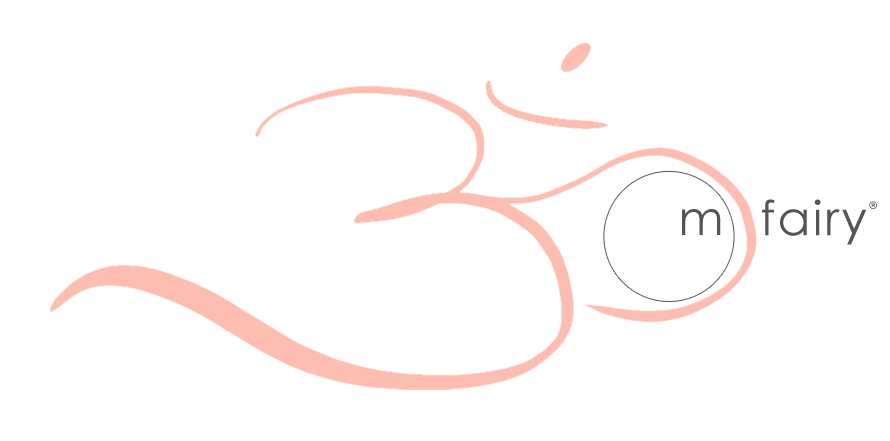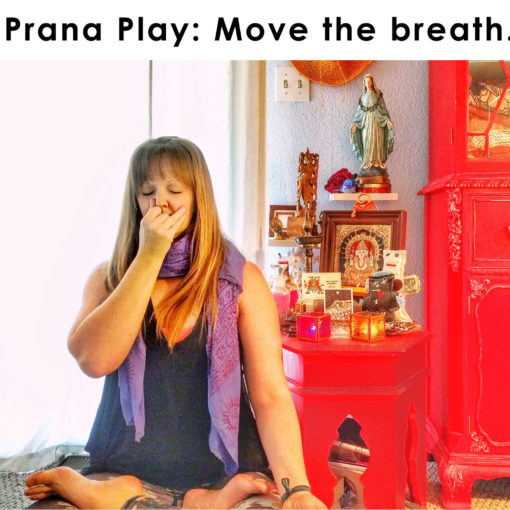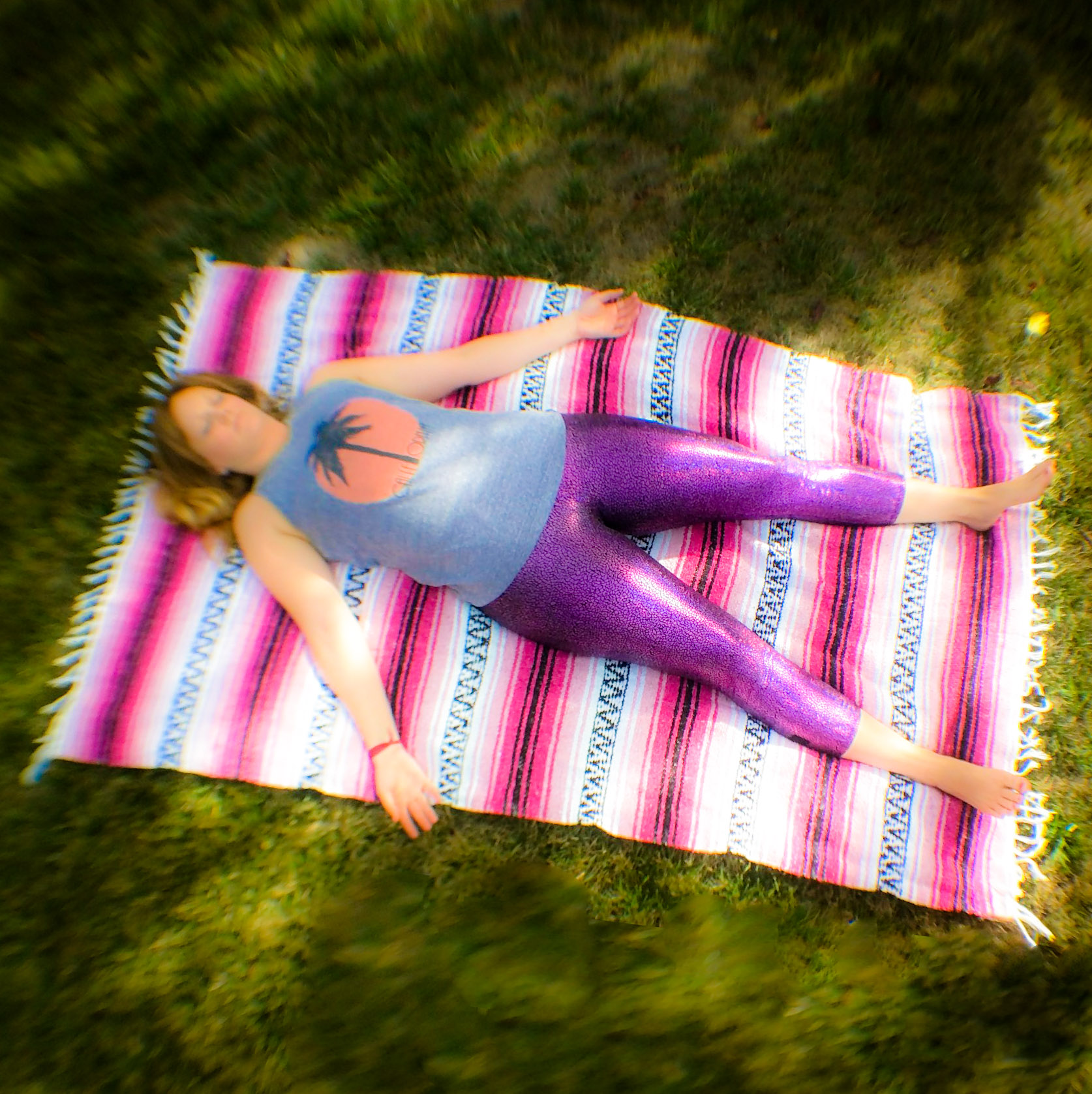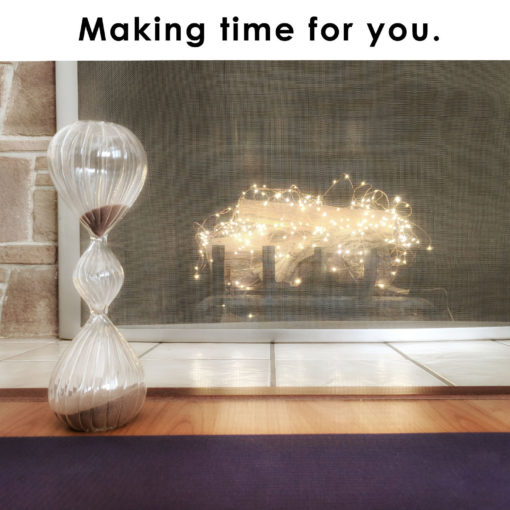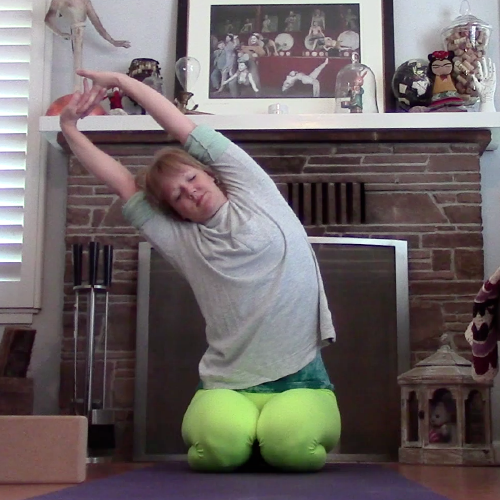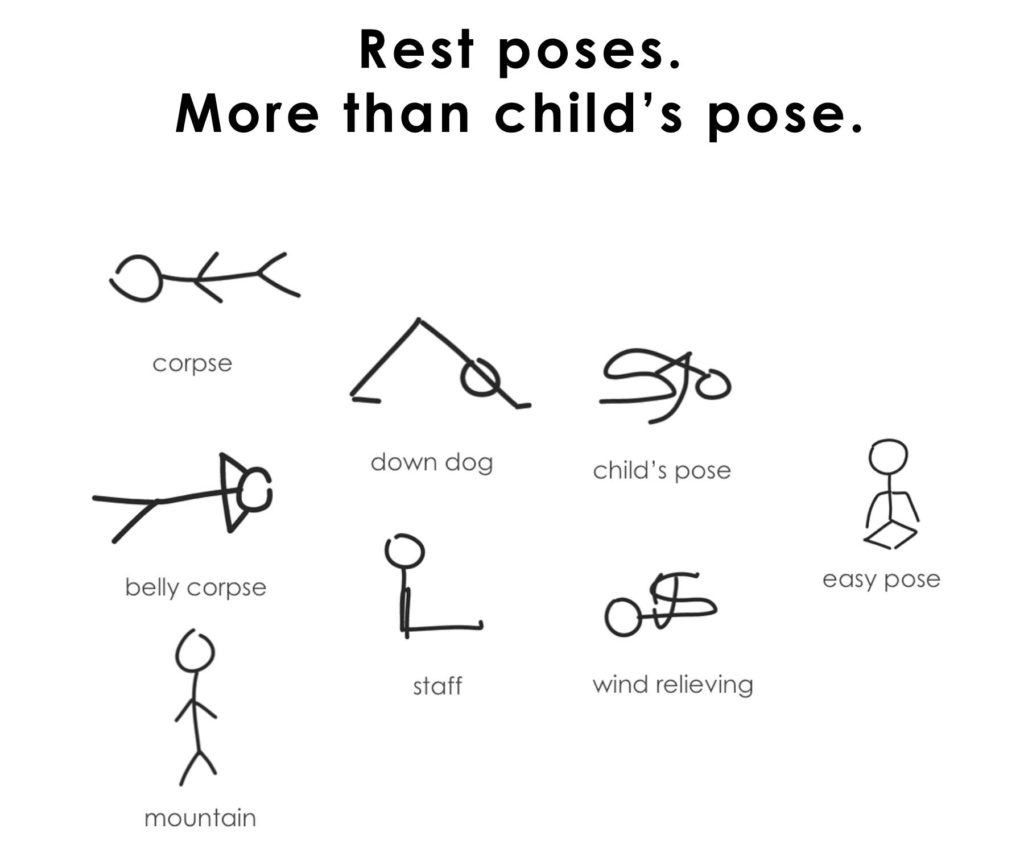
Finding rest and repose is very important to the Flow & Hold® yoga practice. In vigorous flows where we are exploring new transitions and challenging our balance, we want to have enough energy to move safely, and as we move into holding poses for longer and longer amounts of time, we want to be able to start each pose fresh, so we can progress into our expression of it.
In most classes, you’ll hear child’s pose referred to as the rest pose. Occasionally you’ll hear “rest in down dog” which always gets a good laugh from some students. Child’s pose is restful for me, but it’s not for everyone. It is a forced forward fold thanks to the floor keeping your legs in place. As I started thinking about the idea of this pose not being restful for everyone, I started thinking about what it looks like if you move this pose around. Apanasana is the same shape, but it does not place as much force on the body to be in the fold, instead, the floor provides a resting place for your back. As I thought more about this, I started to think about all the places I pause in my practice for a breath or five. These are my rest poses, the ones I feel comfortable pausing in to easily feel my body, to let it come back to homeostasis. Some of them are comfortable for a lot of people, and some are comfortable for only a few. I came back to the thought about resting in down dog and wondered, “What if I changed the orientation to the earth? Can I make the shape be restful, even if it is not the asana?” So I sat in dandasana, hands overhead and asked myself, “Can I feel this restful in down dog?” I tried it, and yes, I could for a bit. This led me down the road of looking at what all of my rest poses looked like as I turned them around and around, finding ways I could engage or rest in each pose, and discovering new places to pause. Tadasana? It’s simply savasana except you are standing up. Can tadasana be as relaxed as savasana? If so, wonderful, because it’s a great place to pause in a standing flow. It’s also a great place to rest in the middle of your day. The people in the grocery store might look at you very strangely if you were to drop into child’s pose or savasana in the grocery store, but they’ll never notice you resting in tadasana. Or maybe they will see that calm, content look on your face and inquire as to how you find it in the midst of your busy day.
Beyond using the rest poses to rest, I use the rest poses to repeatedly check in with my body. Each time I pause I see what has changed since the last time. This allows me to know what my asana practice is doing for me, physiologically, mentally, and in my subtle body. It allows me to explore what imprints the previous posture left in my body, what I can release through my breath, and it helps me guide myself to the next posture I should move into. If I can’t release a muscle with my breath and my mind, then I should explore an asana that will help.
My favorite place to rest or pause in my practice is savasana. I
start my practice there and come through it often before ending with a long version of it. Savasana is like dying a little death each time you come through it. You let everything about the last posture or sequence fall away. You see what remains. You see what you are going to carry with you into the next posture, mirroring the cycle of samsara.
